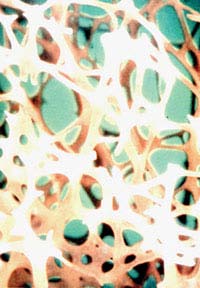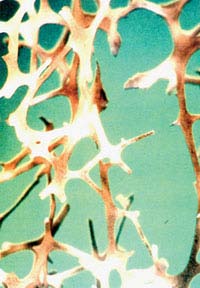Powerpoint presentation

Prevention of Osteoporotic
Vertebral Compression Fractures
Utilizing SAFE Exercise and the
Marti Henshaw, BSc, MSPT

What is Osteoporosis?
• NIH: "A musculoskeletal disorder with
compromised bone strength that predisposes an
individual to increased fracture risk.
• IOF: "A disease in which the density and quality of
bone are reduced."
• Literally: "Porous bones."
• Lay: "T-score less than -2.5."




Incidence of Osteoporosis and Low
Almost 44 million women and men over the age of 50 in
the US (www.iofbonehealth.org, 16 Apr 13)
Osteoporosis is more prevalent than CAD, MI or DM Surgeon
General's Report 2004
It is more prevalent than breast, uterine and ovarian
cancer combined.

Incidence of Osteoporotic Fracture
• Worldwide, there is an osteoporotic fracture
every 3 seconds.
• 1 in 3 women and 1 in 5 men will have one. • A prior fracture is associated with 86% increased
risk of future fracture.
• A 10% loss of bone mass in a vertebrae can
double the risk of vertebral fracture; in the hip
risk increases 2.5x.
www.iofbonehealth.org, 16 Apr 13

Age, Gender, Menopause, Family History, Low
Body Weight/Being Small and Thin, Broken Bones
or Height Loss, Not Getting Enough Calcium and
Vitamin D, Not Eating Enough Fruits and
Vegetables, Getting Too Much Protein, Sodium and
Caffeine, Having an Inactive Lifestyle, Smoking,
Drinking too much alcohol, Losing Weight.
(NOF.org, 9/22/12)
DISEASES AND CONDITIONS
Ankylosing spondylitis
Blood and bone marrow disorders
Chronic obstructive pulmonary disease (COPD), including
Cushing's syndrome
Eating disorders, especially anorexia nervosa
Female athlete triad (includes loss of menstrual periods, an
eating disorder and excessive exercise)
Gastrointestinal bypass procedures
Hyperparathyroidism
Inflammatory bowel disease, including Crohn's disease and
ulcerative colitis
Kidney disease that is chronic and long lasting
Sara Meeks Seminars
Liver disease that is severe, including biliary cirrhosis
Lymphoma and leukemia
Malabsorption syndromes, including celiac disease
Multiple myeloma
Multiple sclerosis
Organ transplants
Parkinson's disease
Polio and post-polio syndrome
Poor diet, including malnutrition
Premature menopause
Rheumatoid arthritis
Spinal cord injuries
This list may not include all diseases and conditions that may cause bone loss.
Sara Meeks Seminars
• Aluminum-containing antacids • Antiseizure medicines (only some) such as Dilantin® or
• Aromatase inhibitors such as Arimidex®, Aromasin® and
• Cancer chemotherapeutic drugs • Cyclosporine A and FK506 (Tacrolimus) • Gonadotropin releasing hormone (GnRH) such as Lupron®
• Heparin • Lithium • Medroxyprogesterone acetate for contraception (Depo-
Sara Meeks Seminars
Proton pump inhibitors (PPIs) such as Nexium®, Prevacid® and
Selective serotonin reuptake inhibitors (SSRIs) such as Lexapro®,
Prozac® and Zoloft®
Steroids (glucocorticoids) such as cortisone and prednisone
Tamoxifen® (premenopausal use)
Anti-rejection drugs in organ-transplant patients
Thiazolidinediones such as Actos® and Avandia®
Thyroid hormones in excess
This list may not include al medicines that may cause bone loss.
Sara Meeks Seminars
Vertebral Compression Fracture
T8-T10 most common with another cluster
Only 20-30% are symptomatic
In North America, up to 45% of VCF are
unrecognized . www.iofbonehealth.org, 16 Apr 13
STAGES OF VERTEBRAL FRACTURE
From: STAND TALL by Morris Notelovitz, M.D.
Triad Publishing, Gainesvil e, Florida
PATTERNS OF POSTURAL
From Magee, D., Orthopedic Physical
Assessment, 2nd ed, 1992
2000 SARA MEEKS PHYSICAL THERAPY
COMPLICATIONS FROM COMPRESSION
FRACTURES OF THE SPINE
Crowding of Internal Organs
Bowel Obstruction
Prolonged Inactivity
Prolonged Pain
Deep Venous Thrombosis
Loss of Body Height
Increased Osteoporosis
Low Self-Esteem
Progressive Muscle Weakness
Emotional & Social Problems
Loss of Independence
Increased Nursing Home
Admissions
(Increase in Thoracic) Kyphosis
Mortality
Old JL. Vertebral Compression Fractures in the
Elderly Am Fam Phy Jan 2004
CLINICAL CONSEQUENCES OF SPINE FRACTURES
SYMPTOMS
FUNCTION
FUTURE RISKS
Back Pain
Height Loss
Impaired ADL's
Increased Risk of
Kyphosis
Difficulty Fitting
Fracture
Sleep Disturbance
Decreased Lumbar Clothes
Increased Risk of
Lordosis
Difficulty Bending, Death
Depression
Protuberant
Lifting,
Decreased Self
Descending Stairs,
Reduced Lung
Fear of future:
Function
Falls and Fractures Weight Loss
Reduced Quality of
Life
Early Satiety
Source: Papaioannou et al. 2002. Reprinted from The American Journal of
Medicine, Diagnosis and management of vertebral fractures in elderly adults.
113(3):220-228 (2002)
Bone Health and Osteoporosis
A Report of the Surgeon General October 2004
How do I know that my patient has low
bone mass or osteoporosis?
Diagnosis and Detection
BONE MINERAL DENSITY TEST
• Gold Standard • AP View Lumbar Spine and Hip • Only Non-Invasive Test
Sara Meeks Seminars
Compares client's bone density to that of a healthy
30 year old adult.
Normal: 0 to –1
Osteopenia: -1 to -2.4
Osteoporosis: -2.5 and below
Every unit of T-Score is associated with a 10%-
12% loss of bone density.
• Fracture- minimal trauma
(e.g., Colles Fracture, Compression Fracture, Rib Fracture.
Any fall from standing body height is a fracture of minimal
trauma)
• Hyper-Kyphosis
• Loss of body height
• Transparent skin
• Periodontal disease
• Back Pain
• Protruding Abdomen
Sara Meeks Seminars
Assume your patient has osteoporosis:
And/or Show Signs:
Postural changes
History of Fracture
Unless they have a DEXA scan to show that
• Wal to occiput
• Inability to touch wall with back of head is (+). • > 7cm in women rules in thoracic VCF with high
degree of accuracy.
• 0 cm reduces chance of VCF but does not reliably
rule it out. Siminoski, et al, 2003
• Rib/Pelvis Distance
Space between iliac crest and bottom of R12 at
midaxillary line
Less than 2 fingerbreadths is (+)
> 2 fingerbreadths rule out lumbar VCF with high
degree of certainty.
≤ 1 fingerbreadth: rule in lumbar VCF with high
certainty. Siminoski, et al, 2001
Vertebral Compression Fractures
occur during movements that include
Nachemson, A. Toward a better understanding of low-back pain: A review of the mechanics of the lumbar disc. Rheu. Rehab. 1975;14:129
If these can cause fractures what about. .
typical senior "fitness" class moves?
DEFINITELY AVOID
Abdominal Crunches or Sit-Ups
Abdominal Roll Ups
ABDOMINAL MACHINE Brings Ribcage towards Pelvis
Knee to Chest Uni or Bi-Lateral
TOE TOUCHES Seated or Standing
Sara Meeks Seminars
S.A.F.E.*
Movement & Exercise™
*Skeletal y Appropriate For Everyone
When Choosing Exercises
Consider the Force of Gravity
• Vary the forces on the bones.
• Maintain stability and optimal spinal alignment as
much as possible as you make activity more
• Do exercise program to strengthen back and hip
stabilizers and to offset the repetitive-use patterns
of the activity.
• Exercise to Prevent, Arrest or Reverse Patterns of
Postural Change.
DEFINITELY AVOID
Any Exercise That Includes
•Forward Bending
•Trunk Twisting
•Lateral Bending
Especially Simultaneously
Most protective exercise to prevent
Sinaki M, Mikkelsen BA: Postmenopausal spinal osteoporosis: flexion versus extension exercises. 1984
You can perform extension on your stomach or back, in side lying, standing and
Erector Spinae Strengthening
The (Lower) Core
Richardson, Jull & Lee
PELVIC FLOOR
Sara Meeks Seminars
Core Strengthening:
Core Strengthening:
Sara Meeks Seminars
Gluteus Medius & Maximus Strengthening
Powers, C, et al, 2013
Prevent, Arrest and even Reverse the
Patterns of Postural Change
Meeks' Basic Realignment Routine
Don't be Stooped by
Source: ftp://ip-184-168-73-58.ip.secureserver.net/phscof-events/docs/2013Presentations/Thursday/Therapist/TherHenshaw.pdf
„Moleküle der Gefühle„ Neurobiologische Grundlagen der Sucht K. Hentschel Psychologin FSP Psychotherapeutin SPV ECP Körperpsychotherapeutin EABP Manuskript im Rahmen des Seminars vom Herbst 2001 sowie 2002 an der Fachhochschule Zürich, Hochschule für Soziale Arbeit
CONCISE GUIDANCE TO GOOD PRACTICE A series of evidence-based guidelines for clinical management Long-term neurological conditions:management at the interface betweenneurology, rehabilitation and palliative care NATIONAL GUIDELINES British Society of Rehabilitation Medicine Clinical Standards Department Guideline Development Group The purpose of the Clinical Standards











